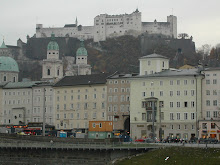
For our Choral Exchange, we visited the Le Hong Phong High School (premier school in HCMC), the Singapore International School (SIS) and the British International School. Coincidentally, on the day we visited the SIS, they were preparing for their Racial Harmony Day.
At the BIS, one lady was so impressed with our performance that she invited us to her house for dinner. Not once but twice. We were treated to good food and we had a good time.
The students of LHP were very warm and friendly, and we sang songs and had a quiz in a café.
On our last night, we had a farewell ceremony at the Son Ky orphanage. We took turn to share our songs and farewell speeches. We were also treated to a great feast of Vietnam food! As a gesture of appreciation, we donated some of our money to the orphanage and it amounted to around 10 million dong (around S$1000)! (We also donated story books and board games to the orphanage)
Throughout the trip, we constantly had to replenish our water supplies. It was the most crucial item on our list. Though I came down with fever and a sore throat, this was still a memorable trip for me. I hope there will be more choral exchanges and overseas CIP in the future. Glad to say, I did not feel homesick at all.
At the BIS, one lady was so impressed with our performance that she invited us to her house for dinner. Not once but twice. We were treated to good food and we had a good time.
The students of LHP were very warm and friendly, and we sang songs and had a quiz in a café.
On our last night, we had a farewell ceremony at the Son Ky orphanage. We took turn to share our songs and farewell speeches. We were also treated to a great feast of Vietnam food! As a gesture of appreciation, we donated some of our money to the orphanage and it amounted to around 10 million dong (around S$1000)! (We also donated story books and board games to the orphanage)
Throughout the trip, we constantly had to replenish our water supplies. It was the most crucial item on our list. Though I came down with fever and a sore throat, this was still a memorable trip for me. I hope there will be more choral exchanges and overseas CIP in the future. Glad to say, I did not feel homesick at all.













